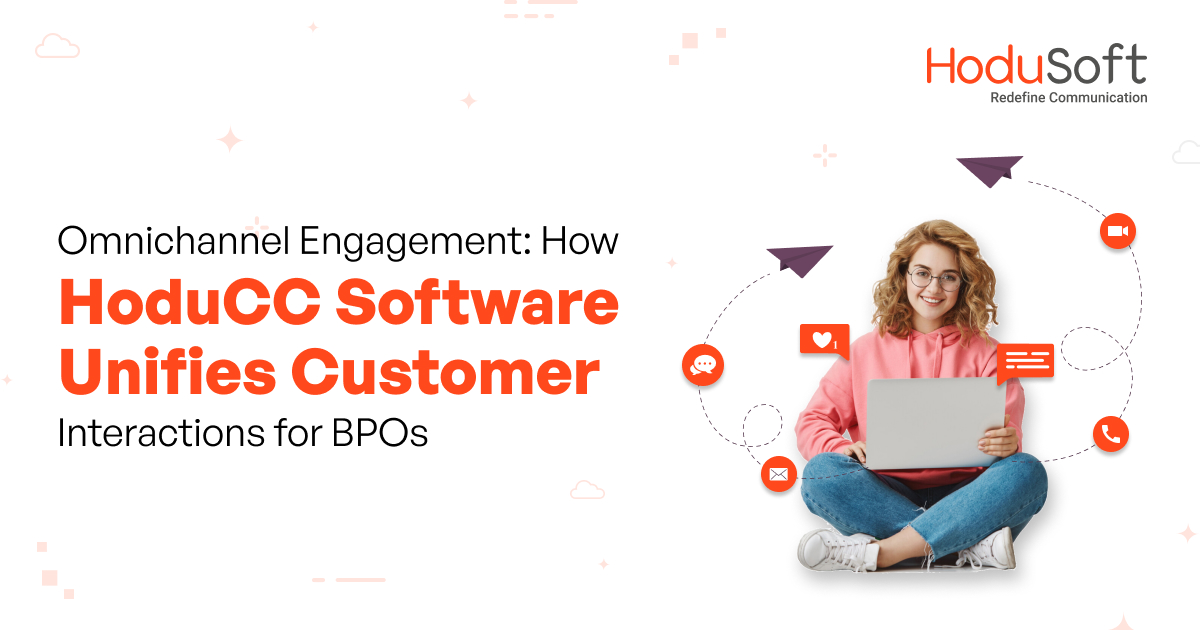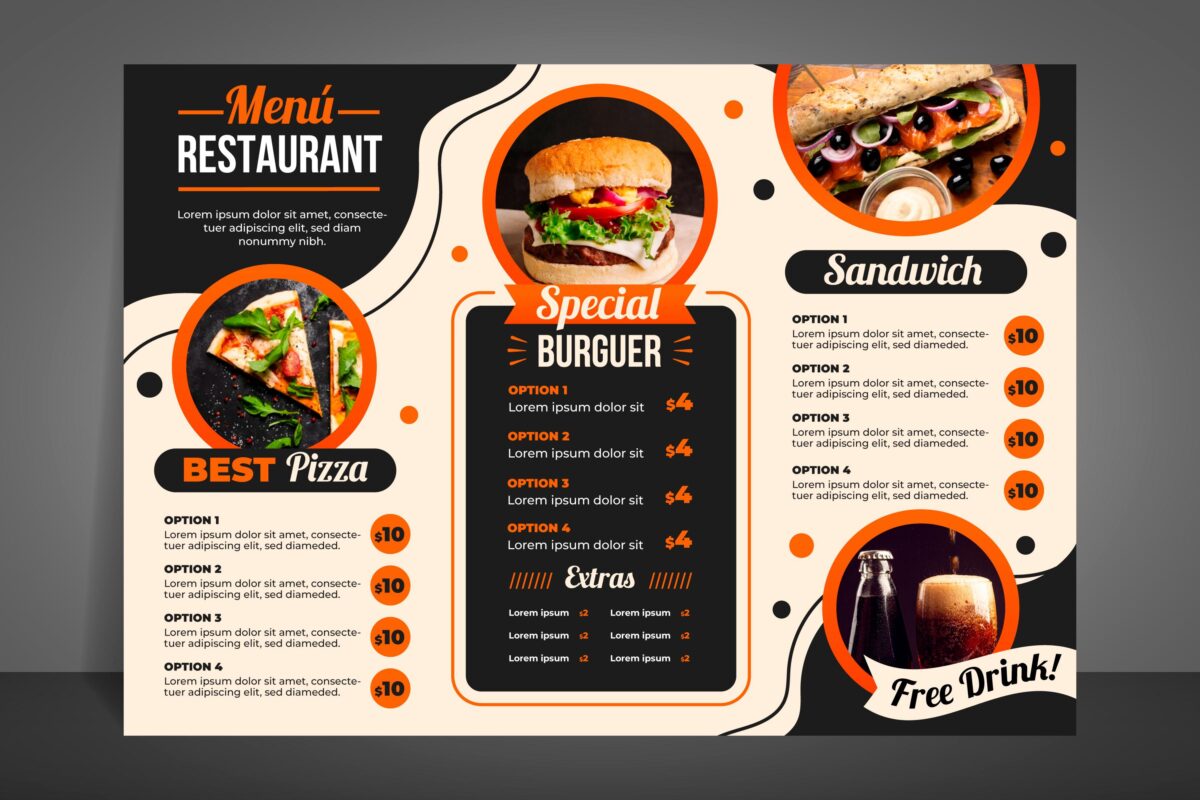Omnichannel Engagement: How HoduCC Software Unifies Customer Interactions for BPOs

As per Straits Research data, the global business process outsourcing (BPO) market size is projected to grow to USD 513 billion by 2030, up from USD 246 billion in 2021, at a compounded annual growth rate (CAGR) of 8.5 percent.
In such a competitive and rapidly growing industry, delivering effective and seamless customer service across various communication channels is extremely important. Previously, a majority of customers preferred phone calls to contact businesses and customer service representatives. But things have changed now. Apart from the two, customers also use emails, text messages, instant messages, live chat, and social media to contact businesses.
A recently released data revealed that 72 percent of customers prefer to connect with businesses through multiple channels. According to stats by Aberdeen Group, businesses with robust omnichannel customer service retain 89 percent of their customers on average. Businesses with weak omnichannel customer service retain just 33 percent of customers.
In such a scenario, solely relying on traditional communication channels such as voice calls and text messages is untenable. Instead, leveraging contact center solutions can help BPOs integrate various communication channels. HoduCC contact center software is at the forefront of this technological revolution.
This blog post discusses the challenges BPOs face due to traditional channels, the benefits of omnichannel solutions for BPOs, and how HoduCC software unifies customer interactions for BPOs.
Challenges BPOs Face Due to Traditional Channels
Interactions through traditional communication channels often result in siloed and disjointed communication. It also leads to lower agent productivity. Let’s discuss more about it.
1. Information Inconsistency
Traditional communication channels are not synchronized, which results in inconsistency in responses.
In an omnichannel system, various communication channels are well-synchronized and customers don’t have to repeat information if they switch channels.
2. Lack of Customer Insights
Traditional communication channels can’t collate valuable customer insights, let alone use the insights effectively.
The omnichannel system, however, provides a unified view across multiple channels. This not only enables BPOs to capture and use the available insights effectively but also to tailor responses and enhance customer experience.
3. Low Agent Productivity
In the traditional communication model, agents can only take one call at a time. And when they speak with a customer they will have to focus their attention and provide responses to the questions mostly relying on their memory.
However, in an omnichannel communication model, agents can handle two or more customer interactions across channels. For example, an agent who is chatting with a customer on the website can also handle customers on instant messaging platforms and social media. They also can browse the internet and valuable resources to get the best responses.
4. Inefficient Allocation of Resources
In traditional communication, resource allocation is not as efficient as the omnichannel model. In some channels, when the incoming communication is higher, agents could be overburdened. In other channels, the agents are underutilized due to the low flow of communication.
In an omnichannel model, BPOs are able to allocate their resources in the best possible manner. By doing so, they ensure that all agents are engaged and no one is overburdened with a huge workload due to fluctuations in communication flow.
Benefits of Omnichannel Solutions for BPOs
Omnichannel solutions offer a wide range of benefits to BPOs. Here, however, we are going to discuss four main benefits that omnichannel communications bring.
1. Cost Optimization
As discussed in the above point, omnichannel communication systems enhance agents’ productivity by leaps and bounds.
When employees are far more productive than ever before, they manage to do more in a day’s work. That means BPO owners can get more work done with the existing agents and that makes a lot of difference in cost savings.
2. Higher Scalability and Flexibility
Omnichannel solutions offer much higher scalability and flexibility compared to traditional channels. That’s because, in traditional channels, the number of communication systems limit agents’ ability to serve a fluctuating volume of customers.
However, in an omnichannel system, agents are not bound by any such limitations. As each agent can serve more than one customer at any given time, they can handle a volley of chats, texts, messages, and notifications during peak seasons. BPOs that have omnichannel support don’t need to make any additional investments during peak seasons.
3. Enhanced Customer Experience
In BPOs, providing a consistent experience across multiple channels is extremely important. Omnichannel solutions manage to do just that. They are platform agnostic. When BPOs leverage sophisticated omnichannel solutions, they make sure that customers get the same quality of service and information irrespective of the communication platform used by the BPO.
Apart from that, BPOs can tailor interactions by studying customer preferences and transaction history. That creates a more relevant and personalized experience for customers.
4. Simplified and More Efficient Workflow
By integrating various communication channels into one platform, omnichannel solutions enable streamlined workflows for BPO.
It enables agents to access relevant information from that unified platform. The automation of routine tasks also simplifies workflow.
How HoduCC Contact Center Software Unifies Customer Interactions for BPOs
Since its launch, HoduCC contact center software has enabled a wide range of BPOs of various sizes to unify customer interactions and deliver exceptional customer experience.
Let’s take a look at how both the single-tenant and multi-tenant contact center software managed to provide a unified customer experience seamlessly.
1. Integration of Automation Tools
As per data published by LiveVox, 68 percent of BPOs use chatbots and virtual agents to enhance customer service and reduce operational costs. The same source also highlighted the prevalence of Artificial Intelligence in the sphere of BPOs. As per the stats, AI-powered workforce optimization tools can boost agent productivity by up to 20 percent. When it comes to predictive analytics, powered by AI, it can decrease customer turnover by 15 percent and enhance customer satisfaction rate by 20 percent.
HoduCC sophisticated contact center software helps BPO integrate intuitive automation tools such as AI Chatbots, interactive voice response (IVR), and agent surveys. These features enhance the customer experience by providing self-service options, personalized interactions, and speedy issue resolution.
2. Seamless CRM Integration and Integration with Other Business Applications
HoduCC contact center software seamlessly integrates with a wide range of Customer Relationship Management (CRM) systems and other business applications such as ticketing platform, SMS, and email systems. These integrations enhance accuracy, promote productivity, and empower BPOs to track, prioritize, and resolve customer support interactions efficiently.
3. Sophisticated Features
HoduCC offers a suite of features designed to elevate customer engagement in BPOs:
- Predictive Dialer: Ideal for managing large call volumes, employing advanced algorithms for enhanced productivity.
- Skill-Based Routing: Directing customers to agents based on their skills, ensuring efficient and specialized support.
- Automatic Call Distribution: Intelligently managing heavy call volumes, distributing calls evenly among contact center agents.
- WebRTC Phone: Built on WebRTC technology, enabling secure connections via popular browsers.
- Auto Dialer: Automating call redirection, optimizing resource usage, and improving productivity.
- Multilevel IVR: Driving efficiency and personalization through smart IVR functions and call flow design.
- Real-Time Analytics & Reports: Monitoring and analyzing customer interactions in real-time to refine support experiences.
All in all,
The right contact center software not only unifies different channels working in silos but it addresses the unique needs of BPOs and empowers them to deliver superior customer experiences. HoduCC contact center software is one such superior solution, which has enabled many BPOs to unify customer interactions across channels.








